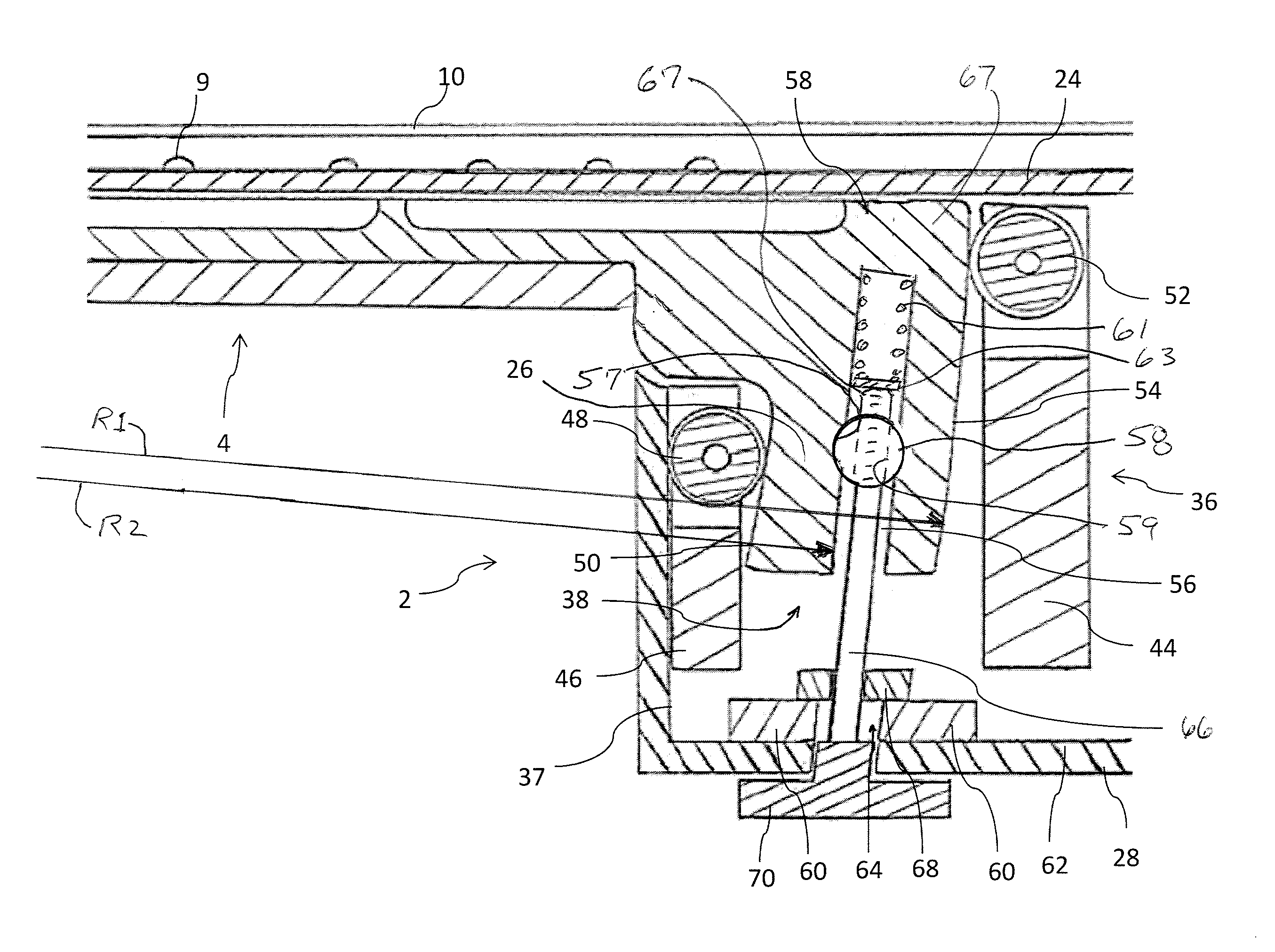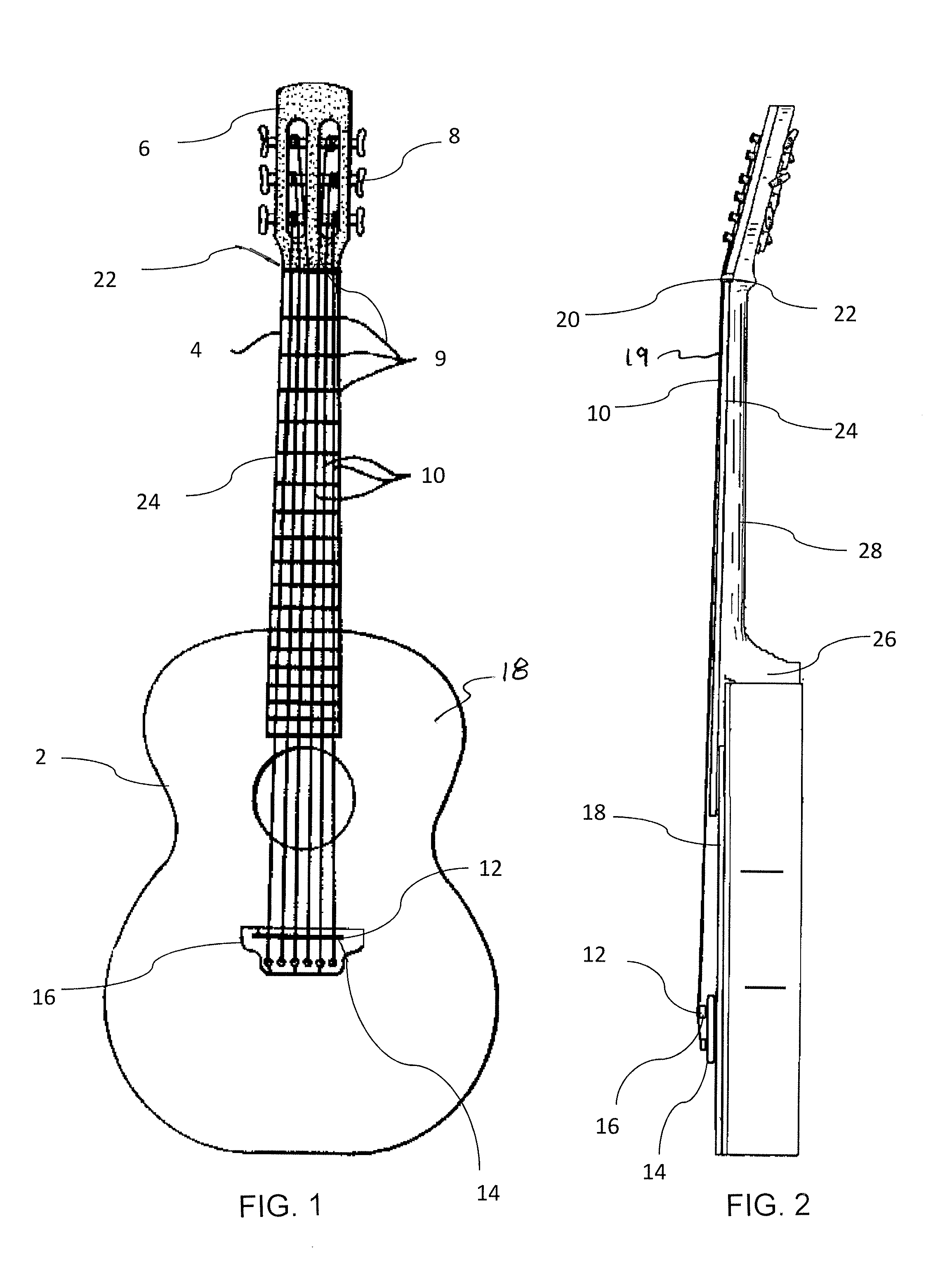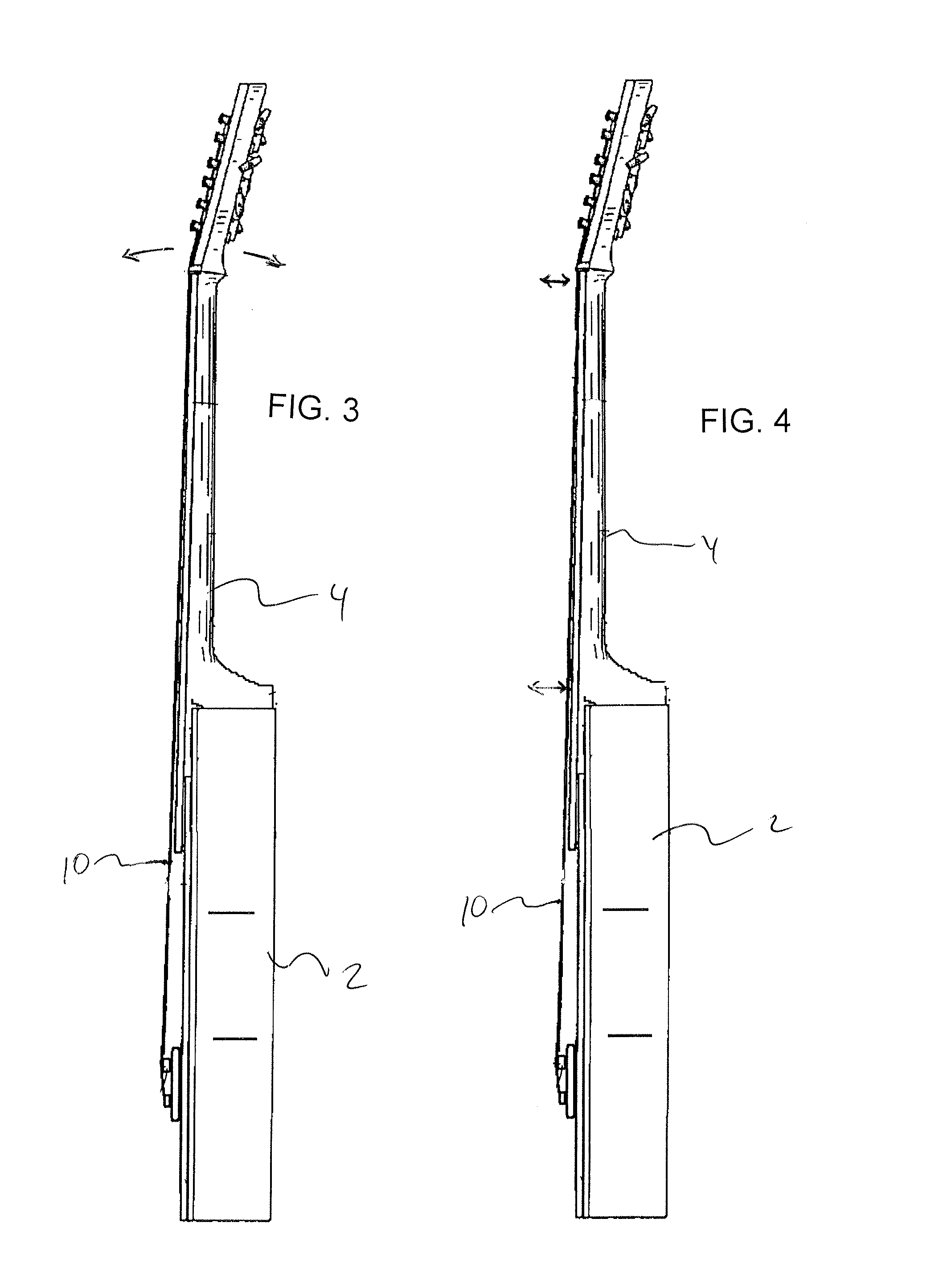Neck adjustment mechanism for string instrument
a technology of adjustment mechanism and string instrument, which is applied in the direction of stringed instruments, musical instruments, guitars, etc., can solve the problems of repetitive stress injury, rigid guitar structure, general unplayability, etc., and achieve the effect of quick and easy adjustment of the relative height of the neck, quick and efficient change of the action of the guitar, and easy modification
- Summary
- Abstract
- Description
- Claims
- Application Information
AI Technical Summary
Benefits of technology
Problems solved by technology
Method used
Image
Examples
first embodiment
[0055]With reference now to FIGS. 8, 9, and 10, the present invention will now be discussed in detail. As shown therein, a neck block 36 is secured to an inwardly facing surface 37 of a front wall of the guitar body 2 so as to become an integral part of the guitar body 2. The neck block 36 is typically glued or otherwise fastened to at least the inner surface 37 of the front wall of the guitar body 2 so as to facilitate secure attachment of the neck 4 thereto. The neck block 36 defines a centrally located pocket 38 therein which is sized so as to intimately receive the heel 26 of the neck 4 and facilitates pivoting movement thereof. The pocket 38 extends substantially normal to both the top and bottom surfaces 18, 28 of the guitar body 2 and, as shown in FIGS. 9 and 10, the pocket 38 is defined by a pair of planar opposed sidewalls 40, 42, a body end wall 44, located closest to the bridge 16 of the guitar body 2, and a neck end wall 46 located closest to the inwardly facing surface ...
second embodiment
[0067]Turning now to FIG. 11, the present invention will now be described. As this embodiment is quite similar to the previously discussed embodiment, only the differences between this embodiment and the previous embodiment will be discussed in detail while identical elements will be given identical reference numerals.
[0068]As shown in this Figure, the orientation of the rollers and the arcuate surface are generally reversed. That is, the heel 26 of the neck 4 supports the roller bearings 80, 86, 88 while inwardly facing end surfaces of the neck block 36 supports and carry the mating arcuate surfaces 84, 92. According to this embodiment, the first and the second roller bearings 80, 86 (e.g., sealed bearings on aluminum shafts) are rotatably supported by the heel 26 and both arranged to engage with a first arcuate surface 84 formed on the inwardly facing surface of the body end wall 44 of the neck block 36. The third roller bearing 88 (e.g., a sealed bearing on an aluminum shaft) is ...
third embodiment
[0071]Turning now to FIGS. 12-15, the present invention will now be briefly described. As this embodiment is somewhat similar to the previously discussed embodiments, only the differences between this embodiment and the previous embodiments will be discussed in detail while identical elements will be given identical reference numerals.
[0072]According to the first and the second embodiments, the fixed distance F between the saddle 14 and the nut 22 is maintained by pivoting the entire neck 4, including the fretboard 24, relative to the guitar body 2 about the second fixed axis 20 which is coincident with the pivot axis P defined by the nut 22. According to the third embodiment, however, only the fretboard 24 is pivotable secured and rotatable about the second fixed axis 20, via a hinge or a pivot 98, for example, while the neck 4 and the the guitar body 2 remain fixedly attached to one another, in a conventional manner, so as to retain the fixed spacing or distance F, between the sad...
PUM
 Login to View More
Login to View More Abstract
Description
Claims
Application Information
 Login to View More
Login to View More - R&D
- Intellectual Property
- Life Sciences
- Materials
- Tech Scout
- Unparalleled Data Quality
- Higher Quality Content
- 60% Fewer Hallucinations
Browse by: Latest US Patents, China's latest patents, Technical Efficacy Thesaurus, Application Domain, Technology Topic, Popular Technical Reports.
© 2025 PatSnap. All rights reserved.Legal|Privacy policy|Modern Slavery Act Transparency Statement|Sitemap|About US| Contact US: help@patsnap.com



